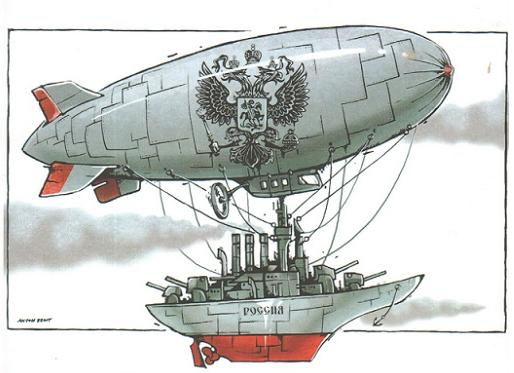Moscow may be forced to dispatch as many as seven army divisions to Central Asia lest the destabilization of that region by ISIS and its allies spark a massive flood of refugees into Russian cities that would make the current situation in the EU look like child’s play, according to MGIMO expert Andrey Kazantsev.
The director of that foreign policy training institute’s Analytic Center is not the first Russian writer to make that point. Mikhail Khodorenok, the editor of Voenno-Promyshlenny Kuryer, made a similar point in a Gazeta.ru article at the end of December.
But Kazantsev’s is the more authoritative voice, and his warnings
about just how dire the situation now is in Central Asia and what Moscow must do to counter the emerging threat there undoubtedly reflect the views of many senior defense and security planners in the Russian capital.
Over the last 12 months, the security situation in Afghanistan has deteriorated sharply and that has all the governments of Central Asia worried. The Afghan military is ever less able to resist the rising number of militants and terrorists flowing in from the outside, including from neighboring Pakistan and the Middle East.
“In principle,” Kazantsev says, Moscow and the Organization of the Collective Security Treaty have sufficient forces to counter any threat from Afghanistan. “The question is how ready Russia will be for ‘a third front’ of war after Ukraine and Syria.” But there are compelling reasons why ignoring the situation is “not an ideal strategy.”
“In the event of a complete destabilization of Central Asia, Russian megalopolises would feel the consequences of massive flows of migrants, in comparison with which the European migration crisis of 2015 would appear quite unserious.”
Moreover, there are additional threats emerging in the region, the MGIMO expert says. ISIS is expanding its influence not only in Afghanistan but also in Central Asia. “The black banners of the Islamic State have been raised by representatives of Turkmen tribes living along the Afghan-Turkmen border where there are many descendants of the basmachi who fought against Soviet power in the 1920s and 1930s.”
Adding to the danger from that direction, he says, is the fact that one of the wings of the Islamic Movement of Uzbekistan
has now sworn allegiance to ISIS.
The Islamic State is finding it easy to recruit in Afghanistan and in Central Asia as well. In Afghanistan, ISIS now pays its fighters seven times more than the Taliban does, a disparity that is leading to the strengthening of the former at the expense of the latter. And within Central Asia, the economic situation is dire.
The fall in world prices for raw materials, the effect of sanctions, and the failure of these countries to address underlying structural issues have all added to the problem. The economic situation is especially dire in Tajikistan, Kyrgyzstan and Uzbekistan as a result of ruble devaluation and the return of thousands of their citizens from their migrant jobs in Russia.
Such people often have no jobs and thus are quite ready to be recruited by ISIS emissaries who promise high pay to their fighters, Kazantsev says.
The situation in Tajikistan is especially bad, he says, because unemployment is high, the country’s security services are in disarray, and the government in fighting Islamism has “committed definite excesses which could lead to the strengthening of the Islamist underground. Among those mistakes was the ban of the moderate Islamist Party of Islamic Rebirth.
Kyrgyzstan’s position is not much better, especially because tensions between Kyrgyz and Uzbeks have become invested in many cases with Islamic ideas. Turkmenistan has seen its economy deteriorate and that has led as many as 360 of its citizens to go to fight for ISIS in Syria and Iraq.
Kazakhstan and Uzbekistan face additional problems: both countries are now facing the prospect of leadership change given the age of their presidents. The situation in Kazakhstan is “comparably stable” because Astana has created “an effective market economy and become a powerful financial center.”
In fact, the MGIMO specialist says, “economic well-being is a good path for neutralizing the problems of religious extremism, the growth of which in other countries of the region is connected not in the last with social-economic problems.” For the time being at least, Kazakhstan is “’a bastion’ protecting Russia from threats from the south.”





